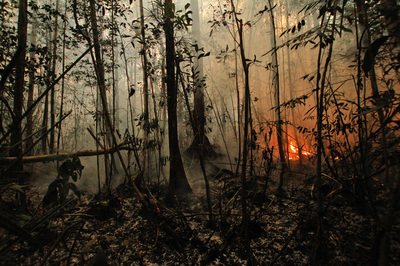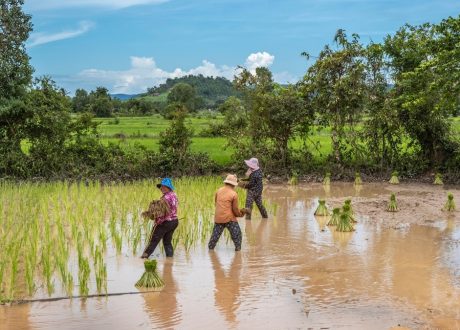
New ISO ESG Implementation Principles provide int’l guidance to streamline ESG practices
New ESG Implementation Principles launched the International Organization for Standardization (ISO) at the 29th United Nations ...

A recent study called for improved land management to reduce the number and extent of peatland fires, an action that would save thousands of people from death over the next three decades across Indonesia, Malaysia and Singapore.
It is well known that peatlands matter for livelihoods, carbon storage, flood mitigation, and water quality. The fires contribute to dangerous levels of particulate matter harmful to human health. Air quality near large population centers could improve significantly, saving lives, according to the study on how peatlands matter for human health.
Researchers looked at data from models of varying land use and land cover, including emissions due to fires. Taking into account such factors as population exposure, smoke distribution and health impacts, the researchers were able to determine the best strategies to manage and protect land while also improving human health outcomes.
They concluded that protecting peatlands alone could prevent about 24,000 deaths per year across the three countries.
As part of this research, a case study in Indonesia showed that thousands of deaths could be prevented each year if the Indonesian Peatland Restoration Agency sites are all rewetted and restored. These sites cover about 2 million hectares—about 7.5 percent of Indonesia’s peatlands—and were deemed critical for restoration after the 2015 Indonesian fires.
The study also developed an online software tool to allow policymakers and decision makers to look at public health outcomes associated with different land use decisions.
Peatlands are priority ecosystems to prevent burning as they emit more smoke than other burning biomes. Protecting peatlands in Indonesia, Malaysia and Singapore could reduce fire emissions and avert 66 percent of excess mortality, the study says.
The threats to, and benefits of, peatland conservation
There are many threats to peatlands in Indonesia and Malaysia since land is being cleared for crops like oil palm. Singapore, meanwhile, is repeatedly affected by fire emissions from peatlands in Sumatra, and to a lesser extent in Kalimantan.
“With global heating exacerbating wildfires, particularly across Asia and Africa, protecting peatlands will become increasingly important for climate change and flood mitigation and for conserving biodiversity, water quality, and also human health,” says UN Environment Program (UNEP) peatlands expert Dianna Kopansky.
“One of the main objectives of UNEP’s Chemical, Waste and Air Quality program of work is to minimize risks to human health and the environment through improved management policies,” she adds.
Peatlands facilitate improved water quality, acting as a giant, natural filter, and hence, are key to achieving several Sustainable Development Goals, including those relating to climate action and biodiversity. The preservation of peatlands also supports the three Rio Conventions: the UN Framework Convention on Climate Change, the Convention on Biological Diversity, and the UN Convention to Combat Desertification.
“Peatlands provide important services across biomes and are beginning to gain attention as a nature-based ‘super’ solution,” says Kopansky. “As the importance of nature gains traction, the future of peatlands can be bright, and they can be used as a tool to help people all over the world. Restoring peatlands is relatively cheap and easy, especially when it helps prevent the need to treat those who get sick due to the proximity of a peat fire.”
New ESG Implementation Principles launched the International Organization for Standardization (ISO) at the 29th United Nations ...
PUMA has already made strong progress in reducing its greenhouse gas emission over the past ...
The United Nations Trade and Development (UNCTAD) urged during the 29th United Nations Climate Change ...


اترك تعليقا